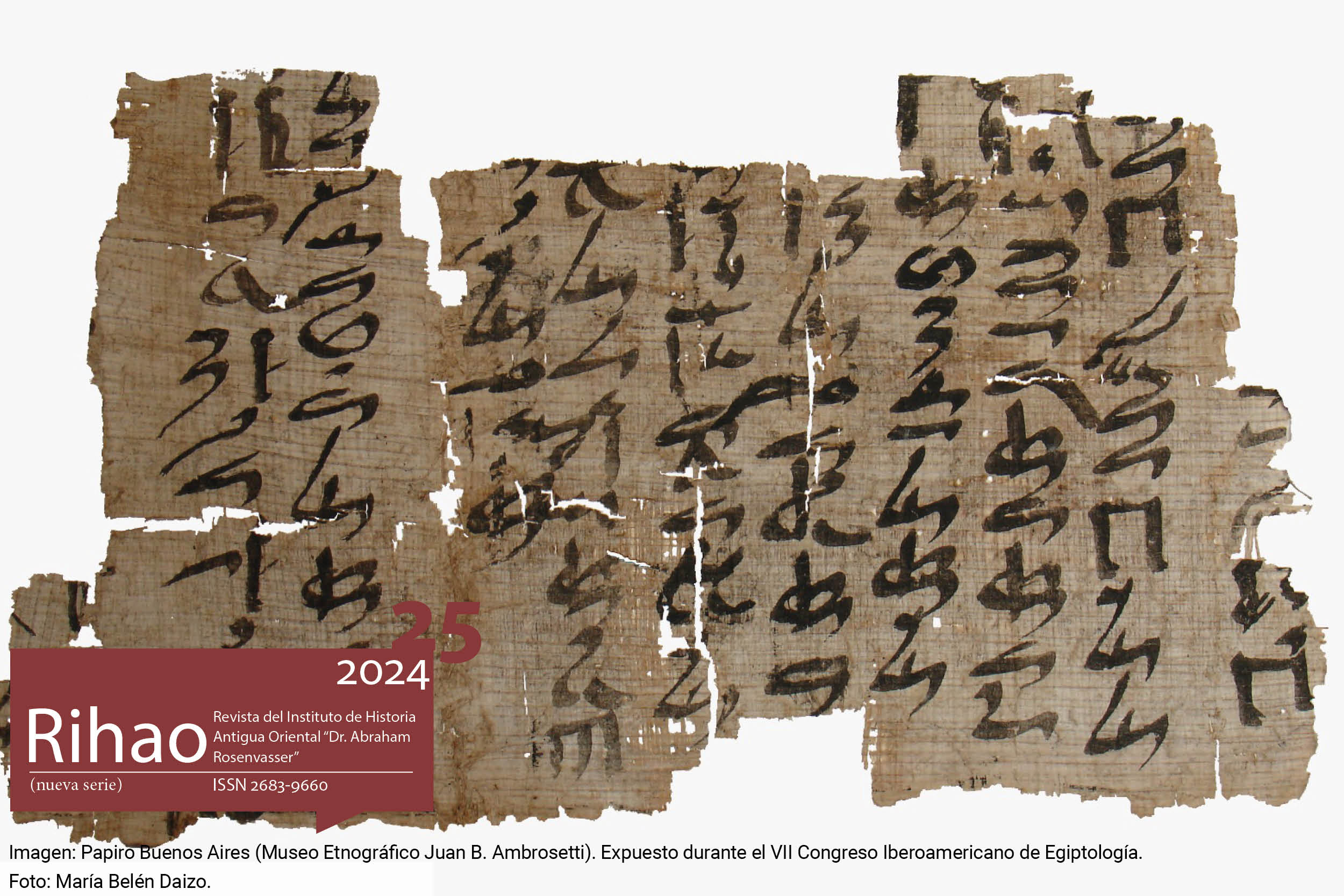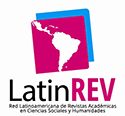The use of mudbrick in the construction of residential buildings in the Middle Kingdom
Abstract
Since the studies carried out mainly by A. J. Spencer, publications on the analysis of ‘mudbrick construction’ have progressively multiplied. However, in most cases, the general tendency is to disdain this building material as a dating method. This paper emphasizes precisely the high degree of variability in the mudbrick construction in order to establish the anachronistic and synchronous evolution of a structural complex, structure type and plaster used. For this purpose, a comparative study of the modules utilized in the so-called ‘state foundations’ of the Middle Kingdom is presented.Downloads
References
Allen, S. J. (2009). Funerary Pottery in the Middle Kingdom: Archaism or Revival?, en: Silverman, D. P., Simpson, W. K. y Wegner, J. (eds.), Archaism and Innovation: Studies in the Culture of Middle Kingdom Egypt. New Haven / Filadelfia: Yale Egyptological Seminar, 319-339.
Arnold, F. (2005). Baukonstruktion in der Stadt Kahun. Zu den Aufzeichnungen Ludwig Borchardts, en: Jánosi, P. (ed.), Structure and Significance. Thoughts on Ancient Egyptian Architecture (Denkschriften der Gesamtakademie 33). Viena: Verlag der Österreichischen Akademie der Wissenschaften, 77-104.
Bader, B. (2021). Material Culture and Identities in Egyptology. Towards a Better Understanding of Cultural Encounters and Their Influence on Material Culture (Archaeology of Egypt, Sudan and the Levant 3). Viena: Austrian Academy of Sciences Press.
Correas-Amador, M. (2017). An Interactive Tool for the Recording, Analysis and Interpretation of Ancient Egyptian Domestic Mudbrick Architecture, en: The Journal of Ancient Egyptian Architecture 2: 71-82.
Eaton-Krauss, M. (2016). The Unknown Tutankhamun. Londres / Nueva Delhi / Nueva York / Sídney: Bloomsbury.
Fitton, J. L., Hughes, H. y Quirke, S. (1998). Northerners at Lahun: Neutron Activation Analysis of Minoan and Related Pottery in the British Museum, en: Quirke, S. (ed.), LahunStudies. Reigate: SIA, 112-140.
Gallorini, C. (1998). Incised Marks on Pottery and other Objects from Kahun: Systems of Communication in Egypt during the Late Middle Kingdom. Tesis doctoral. Londres: University College London.
Griffith, F. L. (1898). Hieratic Papyri from Kahun and Gurob (Principally of the Middle Kingdom). Londres: Bernard Quaritch.
Ibrahim, O. (2019). Hydrology of the Great Fayoum Depression till the 12th Dynasty: Archaeological and Philological Evidences of Artificial Water Entry, en: Minia Journal of Tourism and Hospitality Research 8 (1): 29-46.
Kemp, B. (2000). Soil (Including Mud-Brick Architecture), en: Nicholson, P. T. y Shaw, I. (eds.), Ancient Egyptian Materials and Technology. Cambridge: Cambridge University Press, 78-103.
Kemp, B. y Merrillees, R. S. (1980). Minoan Pottery in Second Millennium Egypt (Sonderschrift des Deutschen Archäologischen Institutes, Abteilung Kairo 12). Maguncia: Philipp von Zabern.
Lorenzon, M. (2016). The Iconography of Mudbrick Production and Construction throughout the Mediterranean: Egypt and the Near East, en: Stucky, R. A, Kaelin, O. y Mathys, H. P. (eds.), Proceedings of the 9th International Congress on the Archaeology of the Ancient Near East: June 9-13, 2014, University of Basel. Volume 1: Travelling Images - Transfer and Transformation of Visual Ideas; Dealing with the Past: Finds, Booty, Gifts, Spoils, Heirlooms; Collections at Risk: Sustainable Strategies for Managing Near Eastern Archaeological Collections. Wiesbaden: Harrassowitz, 191-200.
Love, S. (2017). Field Methods for the Analysis of Mud Brick Architecture, en: Journal of Field Archaeology 42 (4): 351-363.
Mazzone, D. (2017). The Dark Side of a Model Community: The ‘Ghetto’ of el-Lahun, en: The Journal of Ancient Egyptian Architecture 2: 19-54.
Merrillees, R. S. (1973). Syrian Pottery from Middle Kingdom Egypt, en: Australian Journal of Biblical Archaeology 1 (6): 51-59.
Moeller, N. (2018). The Foundation and Purpose of the Settlement at Lahun during the Middle Kingdom: A New Evaluation, en: Ritner, R. K. (ed.), Essay from the Library of Seshat. Studies Presented to Janet H. Johnson on the Occasion of Her 70th Birthday (Studies in Ancient Oriental Civilization 70). Chicago: The Oriental Institute, 187-207.
Pérez Negre. J. (en prensa a). Comparative Archaeology. The Settlement of el-Lahun and its Parallels. New Considerations on the Constructive Evolution of State Foundations in the Middle Kingdom, en: Scarabaeus 1.
Pérez Negre, J. (en prensa b). Module, Dating and Archaeology of Construction. Considerations on the Chronology of Mudbrick Architecture in Egypt (Middle Kingdom and Second Intermediate Period), en: Pérez Negre, J. y Cebrián Cebrián, J. (eds.), Egyptian Archaeology and Architecture. Construction Evolution in Egypt (Egyptology Series-Monographs IEEC Volume 1).
Petrie, W. M. F. (1890). Kahun, Gurob and Hawara. Londres: Kegan Paul, Trench & Trübner.
Petrie, W. M. F. (1891). Illahun, Kahun and Gurob. 1889-90. Londres: David Nutt.
Petrie, W. M. F. (1917). Tools and Weapons. Londres: British School of Archaeology in Egypt.
Quirke, S. (2005). Lahun. A Town in Egypt 1800 BC, and the History of its Landscape, (Egyptian Sites). Londres: Golden House Publications.
Schneider, T. (2006). Middle Kingdom and the Second Intermediate Period, en: Hornung, E., Krauss, R. y Warburton, D. A. (eds.), Ancient Egyptian Chronology (Handbook of Oriental Studies 83). Leiden / Boston: Brill, 168-196.
Spencer, A. J. (1979). Brick Architecture in Ancient Egypt. Warminster: Aris & Phillips.
Spotorno, R., Pochettino, J., Figueredo, G. y García, F. (2016). Ensayos experimentales del proceso de secado de adobe de arcilla de la zona de Makalle (Chaco), en: Actas del III CADI (Congreso Argentino de Ingeniería). Resistencia, Chaco, Argentina. 7 al 9 de setiembre, 2016. En línea: https://ria.utn.edu.ar/items/0287b5dd-c0e9-4d37-a044-01ad958cce64. [Consultado: 20-2-2023].
Tooley, A. M. J. (1995). Egyptian Models and Scenes. Princes Risborough: Shire Publications.
Wegner, J. (1998). Excavations at the Town of Enduring-are-the-Places-of-Khakaure-Maa-Kheru-in-Abydos. A Preliminary Report on the 1994 and 1997 Seasons, en: Journal of the American Research Center in Egypt 35: 1-44.
Wegner, J. (2000a). The Organization of the Temple of Nfr-KA of Senwosret III at Abydos, en: Ägypten und Levante 10: 83-125.
Wegner, J. (2000b). The Nature and Chronology of the Senwosret III-Amenemhat III Regnal Succession: Some Considerations Based on New Evidences from the Mortuary Temple of Senwosret III at Abydos, en: Journal of Near Eastern Studies 55 (4): 249-279.
Wegner, J. (2001). The Town of Wah-sut at South Abydos: 1999 Excavations, en: Mitteilungen des Deutschen Archäologischen Instituts, Abteilung Kairo 57: 281-308.
Wegner, J. (2009). A Decorated Birth-Brick from South Abydos: New Evidence on Childbirth and Birth Magic in the Middle Kingdom, en: Silverman, D. P., Simpson, W. K. y Wegner, J. (eds.), Archaism and Innovation: Studies in the Culture of Middle Kingdom Egypt. New Haven / Filadelfia: Yale Egyptological Seminar, 447-496.
Wegner, J. (2014). Modeling the Mayor’s House at South Abydos, en: Expedition 56 (1): 24-31.
Westermann, W. L. (1919). The Development of the Irrigation System of Egypt, en: Classical Philology 14 (2): 158-164.
Yamamoto, K. y Creasman, P. P. (2020). Dating Tool in Egyptian Archaeology, en: Averbeck, R. E. y Younger, K. L. (eds.), An Excellent Fortress for His Armies, A Refuge for the People: Egyptological, Archaeological, and Biblical Studies in Honor of James K. Hoffmeier. Pensilvania: PSU Press.
Zaremba, M., Trzciński, J., Szczepański, T. y Bobrowska, A. (2021). Influence of Deterioration on the Preservation of Mud Brick Architecture based on the Monuments from the Tell el-Retaba Archaeological Site, en: International Journal Conservation Science 12 (1): 67-86.
Copyright (c) 2024 José Pérez Negre

This work is licensed under a Creative Commons Attribution-NonCommercial 4.0 International License.





.jpg)







